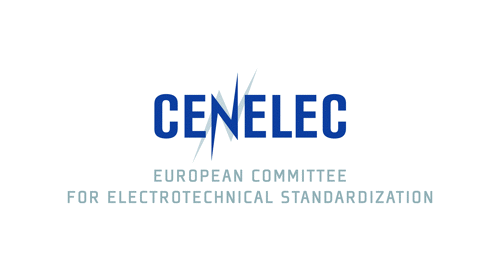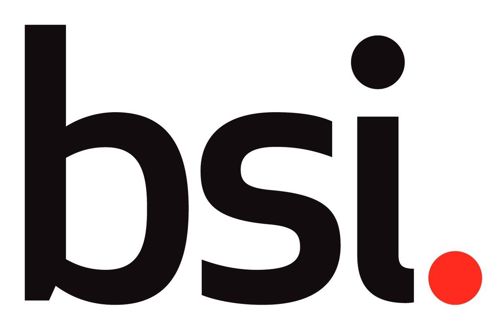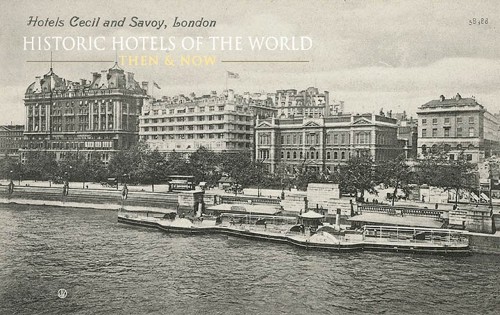
Setting the Standard
The first UK Wiring Rules

The Wiring Regulations have been around since 1882, when the first version was published by The Society of Telegraph Engineers and of Electricians. The fundamental principle of these rules was to provide minimum safety standards for the use of electricity for lighting circuits to reduce the risk of fire.
Of course, over the one hundred and thirty-seven years that have passed since the ‘First Wiring Rules', the rules have changed significantly. The way in which we now use electricity has also changed dramatically, especially in the last thirty-forty years with the inrush of electronic devices and we are now in the era of prosumer’s installations and electric vehicles that require a huge amount of energy in comparison to common household appliances, so we can expect the requirements to be amended further.
Global standardisation
Since the discovery of electricity and the creation of electrical equipment, the farthest corners of the world have been drawing nearer and nearer, naturally, this has led to global trade of products and equipment. However, it was not always possible to deal internationally in the way we do today. This was primarily due to different products and equipment having different characteristics and supply requirements (different standards).
Let’s first go back to 1882 when the first version of what we call today ‘The IET Wiring Regulation’ was published. At this time, there were scientists all over the world experimenting with electricity, trying to harness its power to use in various applications. This is great for discovering new ways in which electricity can be used but not necessarily when it came to where it can be used. This led to the emergence of regional electrotechnical societies. From 1870 to 1890 there was significant growth in learned societies. In 1871 the Society of Telegraph Engineers was founded in London, by 1880 they expanded to become the Society of Telegraph Engineers and Electricians and in 1888 the name had changed to The Institution of Electrical Engineers and in 2006 the IEE merged with the Institute of Incorporated Engineers to become the Institution of Engineering and Technology.
Even today we can still see the drawbacks of working in isolation. From something as simple as having to have an adapter so you can use your appliances abroad to some more complex issues arising from varying supply frequencies, voltages and even earthing arrangements.
The complications of differing global standards first came to light at a meeting of the delegates to the International Electrical Congress, held in St. Louis, USA in 1904. It is documented in the report that "…steps should be taken to secure the co-operation of the technical societies of the world, by the appointment of a representative Commission to consider the question of the standardization of the nomenclature and ratings of electrical apparatus and machinery."
The International Electrotechnical Commission (IEC) was officially founded at the inaugural meeting at the Hotel Cecil (see the picture at the end of this article) in London in June 1906 and by 1914 there were four technical committees responsible for developing international electrotechnical standards. Despite some interruption to the progress of IEC work due to the First World War, by 1923 there were ten IEC technical committees. The IEC currently has 207 technical committees developing standards for a wide range of equipment from switches to lasers. You can view a full list of the committees and its members on the IEC website. The IEC is also responsible for developing Electropedia: The World's Online Electrotechnical Vocabulary where you can find the definition of any electrical term used in international standardisation.
IEC Technical Committee 64 (IEC TC 64)

TC 64 is responsible for IEC 60364, which is the standard for electrical installations and protection against electric shock. Essentially it is the international version of BS 7671. When developing an international standard, the requirements have to be applied to countries all over the world, it is therefore essential that requirements aren’t too restrictive and that they can be introduced without having a detrimental impact on the electrical industry in a particular country. If there are IEC standards that national committees are unable to adopt the national committee can request A Some Countries Note (SCN). Unlike BS 7671, the IEC 60364 series is sold in separate parts, so if you want Chapter 53 you will have to buy IEC 60364- 5-53, for €300
At IEC level the first draft of an amendment or new standard is made available to national committees is as follows:
“Committee Draft (CD). National committees are invited to submit comments and any requests for SCNs on this draft for consideration by international experts. Depending on the complexity of the subject and the number of initial comments it may be necessary to issue a 2nd or 3rd CD to develop the technical requirements.
Committee Draft for Vote (CDV) national committees are invited to submit a positive or negative vote on this document and provide comments of a non-technical nature. It is expected that comments of a technical nature will have been addressed at CD stage.
Final Draft International Standards (FDIS). National committees are invited to submit a positive or negative vote. This is the last opportunity for national committees to comment before it becomes an international standard.”
CENELEC Technical Committee 64 (CLC/TC 64)

Central European Normalization Electrotechnique (CENELEC) is the European Committee for Electrotechnical Standardisation. Designated as a European Standards Organization by the European Commission, CENELEC is a non-profit technical organization set up under Belgian law. It was created in 1973 as a result of the merger of two previous European organizations: CENELCOM and CENEL.
CLC/TC 64 is the technical committee responsible for HD 60364, which is the European standard for Electrical installations and protection against electric shock. This is essentially the European version of BS 7671. The difference between the HD and the IEC publications is that the HD is normative in the UK. This means that electrical installations in the UK are to meet the technical intent of HD 60364. Any technical amendments at a European level must be adopted at a national level. Often (similar to IEC 60364) there are requirements that cannot be easily met and conflict with national standards. If this happens then the national committee of that country can request a Special National Condition (SNC) once the SNC has been included in the HD the requirements detailed in the SNC become normative for that country rather than informative. When a section of a standard is normative it is expected that the information is used in a similar way to a requirement. When the information is informative it is for information and guidance.
At CENELEC level the first draft series of drafts made available to national committees is as follows:
“Committee Draft (CD). National committees are invited to submit comments and any requests for SNCs on this draft for consideration by international experts
Committee Draft for Vote (prEN) CENELEC members national committees are invited to submit a positive or negative vote on this document and provide comments of a non-technical nature. It is expected that comments of a technical nature will have been addressed at CD stage
Final Draft Harmonized document (FprEN). CENELEC member national committees are invited to submit a positive or negative vote. This is the last opportunity for national committees to comment before it becomes a HD.”
Joint Power and Electrotechnical Committee (JPEL/64)

JPEL/64 is a joint committee managed by BSI and the IET responsible for the development of BS 7671 (The IET Wiring Regulations). Members of JPEL/64 are representatives from a wide range of UK organizations integral to the electrical industry. Many of the requirements that we have in BS 7671 have the same technical intent as the CENELEC HDs. Requirements that are UK specific and not derived from HD 60364 can be identified by the number 200, 201, 202 etc. For example, Regulation 412.1.201:
“421.1.201 Within domestic (household) premises, consumer units and similar switchgear assemblies shall comply with BS EN 61439-3 and shall:
(i) have their enclosure manufactured from non-combustible material, or
(ii) be enclosed in a cabinet or enclosure constructed of non-combustible material and complying with Regulation 132.12.”
This requirement is UK only and cannot be found in either IEC 60364 or HD 60364.
When BS 7671 is reviewed and amended a draft for public comment (DPC) is issued to the public so that they can comment on amended and new requirements. The DPC is made available for a period of three months where comments can be submitted for consideration by JPEL/64. As a CENELEC member we are required to adopt HD requirements. This is essentially what drives the BS 7671 review cycle.
UK involvement with IEC and CENELEC standards
The UK has many experts that sit on the international and European committees to contribute to the development of standards. The combined global knowledge and expertise is essential to align standards across the world and in Europe. In addition to UK experts attending IEC and CENELEC meetings, the UK national committee JPEL/64 review, submit comments and votes on relevant electrotechnical standards. This provides an opportunity for the UK industry to consider the implications that new or amended HD and CENELEC standards may have on the industry at a national level. When the draft standards are made available for comment or vote, it is at this time that JPEL/64 have the opportunity to suggest any modifications or corrections and to consider whether a SNC or SCN is required.
What is important to remember is that the UK have a very strong influence on IEC and CENELEC standards development long before the requirements are implemented in the UK. This allows ample time for organizations represented on JPEL/64 to advise and inform their members of any relevant upcoming changes.
The importance of standards
Standardization is important for several reasons. BS 7671 is first and foremost a safety standard to provide a framework for the electrical industry in the UK and many other countries that have adopted the requirements of BS 7671. Earlier, I mentioned that the first edition of the wiring rules was intended primarily to reduce the risk of fire. However, the focus is now on the whole of product and installation safety and international compatibility. The benefit of standards extends beyond safety and plays an important role for EU and international trade of equipment and materials. In order for designs to be compatible, manufacturers need to design to a common standard so that their designs can be installed in accordance with installation standards of the countries they intend to market their products to. As installation standards and product standards are intertwined with one another it is therefore essential that the standards are aligned for practical application.
The process of standardization that we currently work to provides the opportunity around the world, especially in Europe, to trade goods and materials without the need to have them repeatedly verified every time they are supplied to a country with a different standard. This comes back to the fundamental principle of standardization, cooperation of the technical societies of the world.
CENELEC and Brexit
There have been many discussions about the impact of Brexit on UK standards. I am happy to reassure that regardless of the outcome on the 31st October 2019 the UK will remain members of CENELEC and standards development will continue as usual.
In summary
To summarize we have three tiers of standardization in the UK; at the top there is IEC who are responsible for global standards, next in line is CENELEC who are responsible for European standards and finally we have JPEL/64 responsible for UK national standards.
At each stage there is a rigorous process for our national electrical installation standard (BS 7671) which requires any new and amended requirements to be reviewed and agreed by all JPEL/64 members, experts and during the DPC period, the general public. The DPC period is a window of opportunity for the those interested to see the proposed changes to a version of a standard and make comments. This version is made available publicly on BSI’s standards development website https://standardsdevelopment.bsigroup.com/ . There are also equivalent BSI bodies for other UK electrical standards, such as FSH/12 for BS 5839 for Fire Alarms. (JPEL/64 isn’t responsible for all UK standards!)
It can sometimes take many years to implement an IEC or CENELEC requirement at a national level. This, however, provides our national committees with plenty of time to prepare our industry for any upcoming changes.

